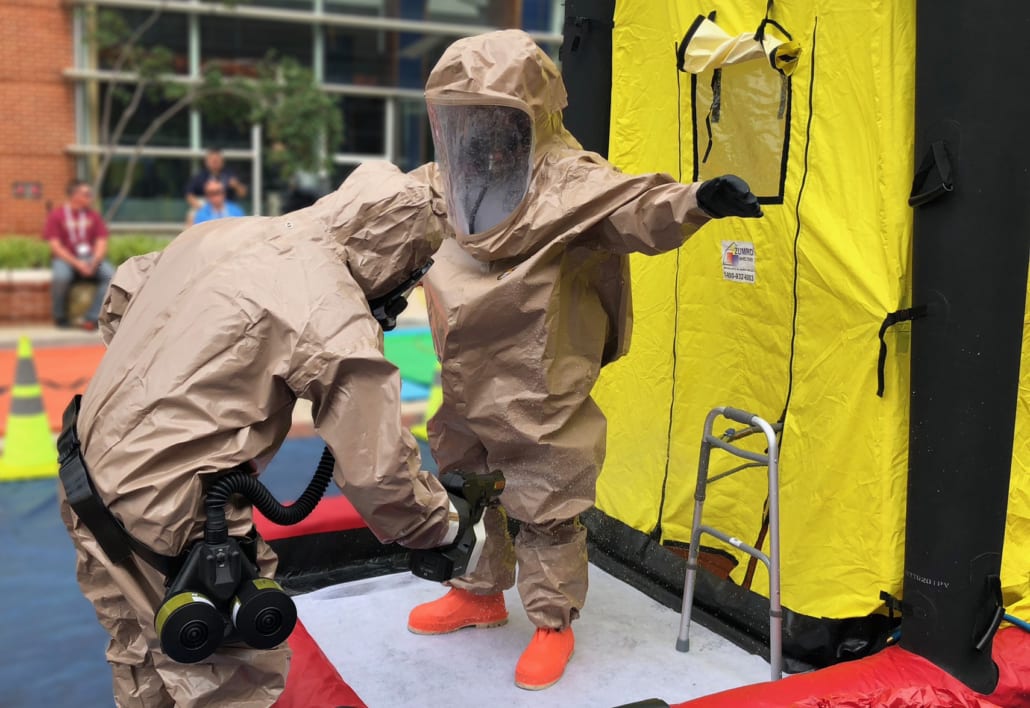Are Electrostatic Sprayers the Right Choice for Personnel Decon?
New EPA report evaluates the effectiveness of electrostatic sprayers
The use of electrostatic sprayers has been a matter of serious debate across the HazMat community. However, with the release of a recent EPA report, the evidence is growing that electrostatic sprayers have significant operational and financial advantages.
The report titled, “Evaluation of Electrostatic Sprayers for use in a Personnel Decontamination Line Protocol for Biological Contamination Incident Response Operations” presents the results of rigorous tests of electrostatic sprayers versus electric backpack sprayers.
A previous EPA study “Report on the 2015 U.S. Environmental Protection Agency (EPA) International Decontamination Research and Development Conference.” (USEPA 2015b) shows that compared to traditional sprayer systems, an electrostatic spray technology is more efficient, reduces waste, and delivers a more uniform distribution of liquids over uneven surfaces. The current study explores the use of electrostatic sprayers as an alternative to the sprayers currently used in a decontamination line setting. Specifically, this study compares the performance of an electrostatic sprayer with a traditional electric backpack sprayer by evaluating the efficacy of each sprayer in removing or inactivating spores of Bacillus atrophaeus var. globigii (Bg), a surrogate for Bacillus anthracis, from different types of PPE materials.
The new report expands on those findings and highlights the operational advantages provided by electrostatic sprayers in personnel decontamination protocols. Among these advantages are:
- Less chance of cross contamination
- Less liquid used
- Less contaminated runoff
- Lower logistical requirements
- Less cost to cover
HazMat teams that utilize electrostatic sprayers can reduce the amount of liquid needed to effectively decontaminate biological contamination which reduces risk of cross contamination as well as contaminated runoff.
The results of the tests showed that the quantity of liquid waste generated by the electrostatic sprayer was almost 75 times less than by the backpack sprayer.
Although the spray duration of the electrostatic sprayer was three times longer than the traditional backpack sprayer, the liquid waste from the electrostatic sprayer rarely contained viable spores, and the waste stream volume was significantly reduced.
Therefore, the disadvantage of increased decontamination line spraying time may be outweighed by the significant advantages in waste reduction and the decreased risk of personnel cross-contamination and spread of contamination beyond the impacted site.
Using electrostatic sprayers, HazMat teams can cover and decontaminate larger surface areas with less liquid reducing the amount of decontamination solution that must be procured and stored
Additionally, liquid waste generated from a biological decontamination line may be costly to dispose of and will likely cause difficulty in finding a disposal facility willing to accept the liquid waste.
Download a copy of the full EPA report.
Also, download the free White Paper, The True Cost of Decontamination.




